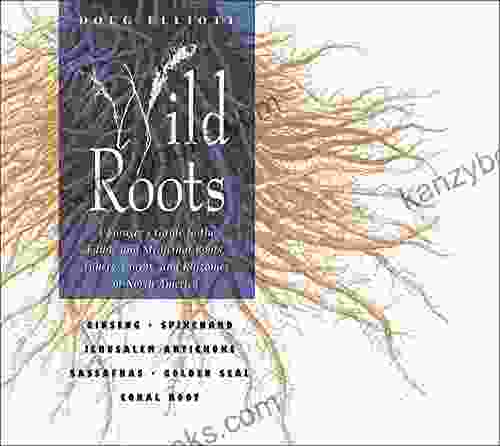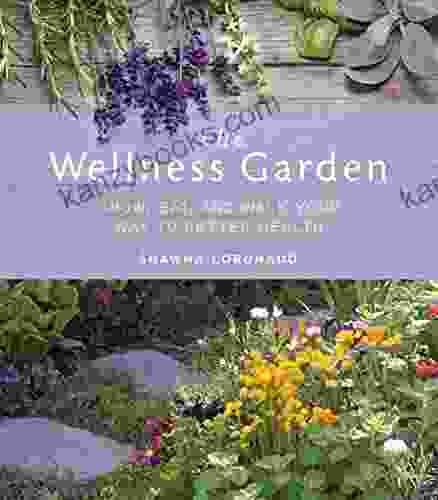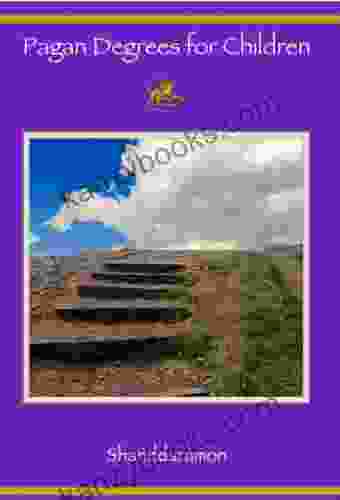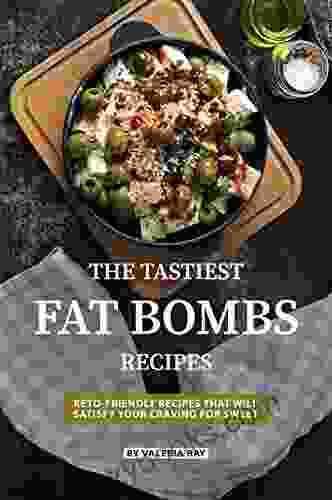Discover the Hidden World of Edible Underground Treasures: A Comprehensive Guide to Foraging Roots, Tubers, Corms, and Rhizomes

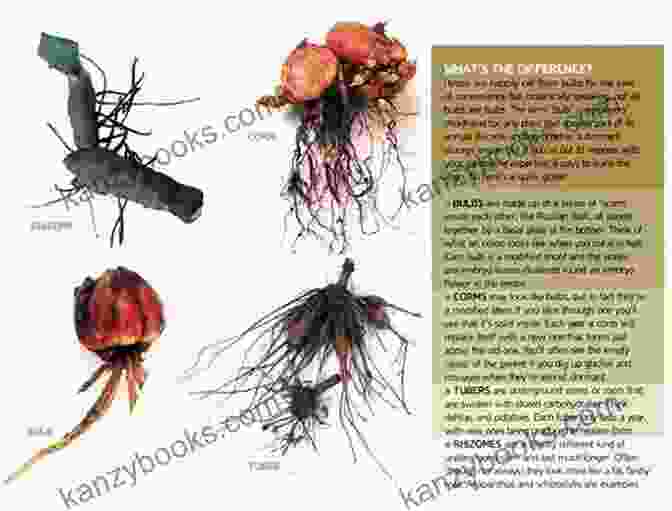
Foraging for wild edibles is a rewarding and enriching activity that connects us with nature and our ancestral practices. One often overlooked group of wild edibles is the hidden treasures found beneath the ground: roots, tubers, corms, and rhizomes. These underground gems offer a wealth of nutritional and medicinal benefits, making them valuable additions to any forager's repertoire.
4.4 out of 5
| Language | : | English |
| File size | : | 3838 KB |
| Text-to-Speech | : | Enabled |
| Screen Reader | : | Supported |
| Enhanced typesetting | : | Enabled |
| Word Wise | : | Enabled |
| Print length | : | 251 pages |
This comprehensive guide will delve into the diverse world of edible underground plants, empowering you to identify, harvest, and use these culinary and medicinal marvels safely and sustainably.
Types of Edible Underground Plants
Roots: Roots are the primary anchors of plants, absorbing water and nutrients from the soil. Edible roots include dandelion root, burdock root, and carrots.
Tubers: Tubers are swollen, fleshy underground stems that store nutrients for the plant. Common edible tubers include potatoes, sweet potatoes, and yams.
Corms: Corms are compact, bulb-like stems with a papery outer layer. Edible corms include taro, elephant ears, and crocuses.
Rhizomes: Rhizomes are horizontal, underground stems that spread laterally. Some edible rhizomes include ginger, turmeric, and Solomon's seal.
Identification and Harvesting
Identifying edible underground plants requires careful observation and knowledge of their unique characteristics. Pay attention to the plant's leaves, stems, flowers, and fruit, as they can provide clues to its identity. It's also essential to use reputable field guides and consult with experienced foragers to avoid misidentification.
When harvesting, use sharp tools to carefully dig around the plant, ensuring not to damage the roots or surrounding vegetation. Harvest only what you need, leaving some behind for the plant's regeneration and for other wildlife.
Preparation and Use
After harvesting, edible underground plants can be prepared in various ways. Some roots, such as carrots and radishes, can be eaten raw, while others, like burdock root, require cooking to soften them. Tubers, like potatoes and sweet potatoes, can be roasted, baked, fried, or boiled. Corms and rhizomes, such as ginger and turmeric, are often used in grated or powdered form for culinary or medicinal purposes.
Edible underground plants offer a wide range of nutritional benefits. They are rich sources of vitamins, minerals, fiber, and antioxidants. Some, like ginger and turmeric, possess anti-inflammatory and antimicrobial properties.
Medicinal Uses
In addition to their culinary value, edible underground plants have been used for centuries in traditional medicine. Dandelion root, for example, is known for its diuretic and liver-supporting properties, while burdock root is traditionally used to detoxify the body. Ginger and turmeric have been widely used for their anti-inflammatory and pain-relieving effects.
Exploring the world of edible underground plants is a fascinating and rewarding journey. By understanding their identification, harvesting, and preparation techniques, you can unlock a treasure trove of culinary and medicinal delights. Remember to forage responsibly, respecting the environment and ensuring the sustainability of these precious resources for future generations.
Whether you're a seasoned forager or just starting your adventure, this guide will empower you to safely and sustainably incorporate edible roots, tubers, corms, and rhizomes into your diet and natural medicine cabinet.
4.4 out of 5
| Language | : | English |
| File size | : | 3838 KB |
| Text-to-Speech | : | Enabled |
| Screen Reader | : | Supported |
| Enhanced typesetting | : | Enabled |
| Word Wise | : | Enabled |
| Print length | : | 251 pages |
Do you want to contribute by writing guest posts on this blog?
Please contact us and send us a resume of previous articles that you have written.
 Book
Book Novel
Novel Page
Page Chapter
Chapter Text
Text Story
Story Genre
Genre Reader
Reader Library
Library Paperback
Paperback E-book
E-book Magazine
Magazine Newspaper
Newspaper Paragraph
Paragraph Sentence
Sentence Bookmark
Bookmark Shelf
Shelf Glossary
Glossary Bibliography
Bibliography Foreword
Foreword Preface
Preface Synopsis
Synopsis Annotation
Annotation Footnote
Footnote Manuscript
Manuscript Scroll
Scroll Codex
Codex Tome
Tome Bestseller
Bestseller Classics
Classics Library card
Library card Narrative
Narrative Biography
Biography Autobiography
Autobiography Memoir
Memoir Reference
Reference Encyclopedia
Encyclopedia Stacey Joyful
Stacey Joyful Tonie Mapson
Tonie Mapson Mary Hertz Scarbrough
Mary Hertz Scarbrough Xandra Nash
Xandra Nash Stephen Mansfield
Stephen Mansfield Steve Clines
Steve Clines Ms Fruit
Ms Fruit Tina M Zion
Tina M Zion Savour Press
Savour Press Tiffany Rose
Tiffany Rose Vivek Bald
Vivek Bald Sarah Rainey
Sarah Rainey Scott O Dell
Scott O Dell Stephen Lean
Stephen Lean Taylor Ellingson
Taylor Ellingson Whitney Woodward
Whitney Woodward Sumayya Usmani
Sumayya Usmani Susan Cramm
Susan Cramm Michael Gisman
Michael Gisman Wade Neilson
Wade Neilson
Light bulbAdvertise smarter! Our strategic ad space ensures maximum exposure. Reserve your spot today!
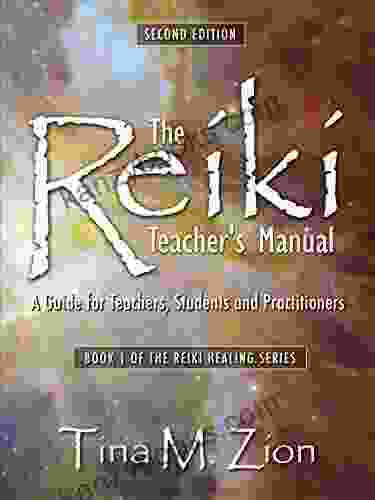
 Allen ParkerThe Ultimate Guide to Reiki Healing: A Comprehensive Resource for Teachers,...
Allen ParkerThe Ultimate Guide to Reiki Healing: A Comprehensive Resource for Teachers,...
 Nathaniel PowellMaster Data Management Revolutionized: Unlocking the Power of SQL Server 2024...
Nathaniel PowellMaster Data Management Revolutionized: Unlocking the Power of SQL Server 2024... Gabriel MistralFollow ·10.6k
Gabriel MistralFollow ·10.6k Wesley ReedFollow ·10.1k
Wesley ReedFollow ·10.1k Holden BellFollow ·14.3k
Holden BellFollow ·14.3k Andy HayesFollow ·12.1k
Andy HayesFollow ·12.1k John KeatsFollow ·7.8k
John KeatsFollow ·7.8k J.R.R. TolkienFollow ·19.5k
J.R.R. TolkienFollow ·19.5k Amir SimmonsFollow ·10.7k
Amir SimmonsFollow ·10.7k Rob FosterFollow ·7k
Rob FosterFollow ·7k

 Virginia Woolf
Virginia WoolfGetting High Fat Diet Easily Using Keto Fat Bomb Cookbook
Unveiling the Power of Fat...

 Milan Kundera
Milan KunderaAre You Cryin' Brian? Find the Inspiration and Humor in...
Life can be full of...

 Edmund Hayes
Edmund HayesUnlock Your Vitality: The 15-Day Natural Energy Boost...
Are You Ready to...

 Gavin Mitchell
Gavin MitchellMultiple Sclerosis Life Expectancy: Unveiling the Impact...
Multiple Sclerosis (MS) is a...

 Gabriel Garcia Marquez
Gabriel Garcia MarquezGet The Thighs That Can Crack Man Head Like Walnut
Are you tired of weak, flabby...
4.4 out of 5
| Language | : | English |
| File size | : | 3838 KB |
| Text-to-Speech | : | Enabled |
| Screen Reader | : | Supported |
| Enhanced typesetting | : | Enabled |
| Word Wise | : | Enabled |
| Print length | : | 251 pages |


